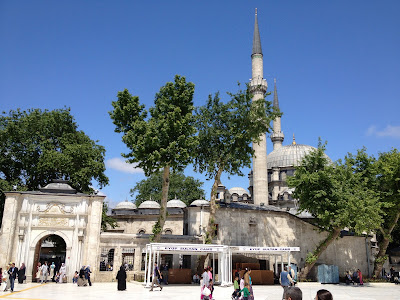History of Istanbul, Turkey
Hello Friends, Welcome to another blog. In this blog, I explain the History of Istanbul, Turkey.
Istanbul, formerly known as Byzantium and Constantinople, is a city with a rich history and vibrant cultural heritage. Situated at the crossroads of Europe and Asia, Istanbul has been a significant center of trade, culture, and political power for over two millennia. From its ancient origins to its modern-day status as Turkey's largest city, Istanbul's history is a tapestry of conquests, empires, and cultural exchanges. Here are 15 amazing points that encapsulate the fascinating history of Istanbul:
1. Ancient Origins
The earliest known settlement in Istanbul dates back to around 3000 BCE, during the Neolithic period. It was initially a small fishing village situated on the European side of the Bosporus Strait.
2. Greek and Roman Period
Around 660 BCE, Greek colonists from Megara founded the city as Byzantium. It later became part of the Roman Empire in 196 CE and served as an important strategic location connecting Europe and Asia.
3. Constantinople
In 330 CE, Emperor Constantine the Great chose Byzantium as the site for his new capital, renaming it Constantinople (Constantinopolis in Greek). The city flourished as the capital of the Eastern Roman (Byzantine) Empire for over a thousand years.
4. Byzantine Empire
During the Byzantine era, Constantinople became one of the wealthiest and most influential cities in the world. It was adorned with magnificent palaces, churches, and fortifications, including the iconic Hagia Sophia, which was completed in 537 CE.
5. The Great Schism
In 1054 CE, the Christian church split into the Roman Catholic Church and the Eastern Orthodox Church, with Constantinople becoming the center of Orthodoxy. This event, known as the Great Schism, marked a significant religious and cultural divide between East and West.
6. The Fourth Crusade
In 1204 CE, Constantinople was sacked and looted by the Fourth Crusade, leading to the establishment of the Latin Empire in the city. This period of Latin rule lasted until 1261 when the Byzantines reclaimed Constantinople.
7. Ottoman Conquest
In 1453 CE, the Ottoman Sultan Mehmed II captured Constantinople after a lengthy siege, effectively marking the end of the Byzantine Empire. Mehmed renamed the city Istanbul and made it the capital of the Ottoman Empire.
8. Golden Age of the Ottoman Empire
Istanbul flourished under Ottoman rule, becoming a multicultural metropolis with a diverse population of Turks, Greeks, Armenians, Jews, and other ethnic groups. The Ottomans constructed many iconic landmarks, including the Topkapi Palace and the Suleymaniye Mosque.
9. Sultanahmet Square
This historic square, also known as the Hippodrome of Constantinople, was the center of Byzantine and Ottoman public life. It features ancient monuments such as the Obelisk of Theodosius, the Serpent Column, and the German Fountain.
10. The Grand Bazaar
Built-in the 15th century, the Grand Bazaar is one of the oldest and largest covered markets in the world. It spans over 61 streets and houses more than 4,000 shops selling a wide variety of goods, including jewelry, textiles, spices, and ceramics.
11. Treaty of Sèvres
After World War I, Istanbul became the focal point of political upheaval as the Ottoman Empire disintegrated. The Treaty of Sèvres, signed in 1920, partitioned the empire and threatened the sovereignty of Istanbul. However, Turkish nationalists, led by Mustafa Kemal Atatürk, launched a successful War of Independence, resulting in the establishment of the Republic of Turkey in 1923.
12. Modernization and Urban Development
In the decades following the founding of the republic, Istanbul underwent rapid modernization and urban development. The city's skyline transformed with the construction of modern buildings, bridges, and highways.
13. Geopolitical Significance
Istanbul's strategic location between Europe and Asia has made it a coveted prize throughout history. Its control over the Bosporus Strait, a crucial waterway linking the Black Sea to the Mediterranean, has given it immense geopolitical importance.
14. Cultural Melting Pot
Istanbul's diverse population and rich cultural heritage have led to a vibrant fusion of traditions, cuisine, and arts. Visitors can explore neighborhoods like Beyoglu and Kadikoy to experience the city's eclectic mix of cultures.
15. Tourist Attractions
Today, Istanbul is a major tourist destination, welcoming millions of visitors each year. From the majestic domes and minarets of the Blue Mosque to the bustling streets of the Karakoy district, the city offers a wealth of attractions that reflect its illustrious past and dynamic present.
Please view my other blogs. I share the link in this blog.
https://harisnajmi.blogspot.com/2024/04/short-history-of-roman-empire.html
https://harisnajmi.blogspot.com/2024/03/history-of-taj-mahal.html
https://harisnajmi.blogspot.com/2024/03/pyramids-of-giza.html
.jpeg)
.jpeg)
.jpeg)

Comments
Post a Comment